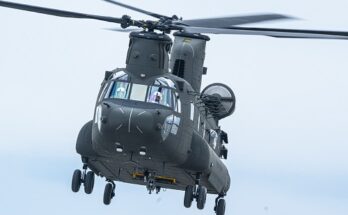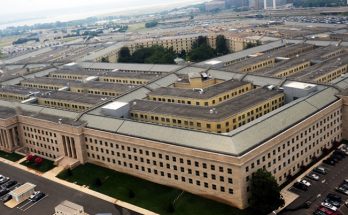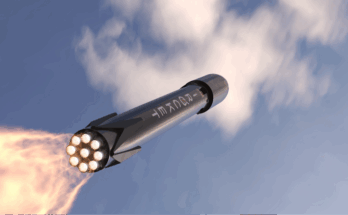A government-to-government Foreign Military Sale (FMS) request by South Korea for acquisition of the F-35 combat aircraft has been approved by the U.S. State Department. Notification of the estimated $5.06 billion request was delivered to Congress by the Pentagon’s Defense Security Cooperation Agency (DSCA) on September 13.
The South Korean request covers 25 F-35 “A” variant conventional takeoff and landing (CTOL) aircraft, along with 26 Pratt & Whitney F135-PW-100 engines (25 installed, plus one spare).
South Korea already has ordered 40 F-35A fighters under a contract placed in 2014. The first two of these units were delivered to the Republic of Korea Air Force (ROKAF) air base on March 29, 2019. The ROKAF declared Initial Operational Capability (IOC) for its F-35 fleet on December 17, 2020.
However, from the moment the F-35 was selected by South Korea’s Joint Chiefs of Staff (JCS) to meet the Phase Three requirement of its FX next-generation fighter fleet modernization program on November 22, 2013, the ROKAF has continued to press for adding more of the fighters to increase the fleet’s capacity. The original ROKAF requirement was for 60 fighters, with the service holding out hope that the remaining 20 would ultimately be procured.
Instead, it later appeared that Seoul would be doubling the number of F-35s ordered.
South Korea’s government announced in August 2020 that it intended to move forward on a second batch purchase of F-35s that would effectively double the number already on order. The acquisition would involve 40 Lockheed Martin stealth F-35 Lightning II fighters, at a cost of KRW8 trillion ($6 billion). Unlike the first phase procurement, the second phase aimed to cover two types of the aircraft: the F-35A and the short takeoff and vertical landing (STOVL) F-35B. The latter type would be acquired for operational deployment on the Republic of Korea Navy’s new light aircraft carrier planned for readiness by the early 2030s. Priority was originally being given to acquisition of the F-35B jump-jets, with the conventional A models to be added later. However, it then began to appear that this plan would be reversed, with the F-35A batch purchase superseding the Bs and with the entire carrier plan rumored to be in jeopardy.
The second phase procurement of F-35s was originally targeted at 20 units, but once determination was made under the 2021-2025 defense plan to design, develop, and build a 30,000-ton light aircraft carrier, the requirement for the additional 20 F-35Bs emerged.
By July 2022 reports indicated that the purchase of 20 F-35A Block 4 units would be made soon, thus leaving questions regarding the STOVL procurement up in the air.
Now its appears that South Korea intends to move forward on the conventional F-35 batch acquisition first – and at a slightly higher unit number than originally intended. Whether this signals the demise of the planned carrier project, or simply that the project is being delayed (it was not included in FY23 funding plans), remains to be seen.
One possibility reported is that the Ministry of Defense intends to pursue a larger carrier than initially planned, one that would increase from an initial scale of 30,000 tons to a larger, medium-size 50,000-ton vessel. If that were to happen, reports indicate that the MoD may seek to purchase a navalized version of the nascent KF-21 Boramae (Falcon), an indigenous 4.5-generation combat aircraft currently in the critical testing phase.
Regardless of how things play out on the naval side, the ROKAF appears to be in line for the increase in F-35 capacity it sought nearly a decade ago.
Dan Darling is Forecast International’s director of military and defense markets. In this role, Dan oversees a team of analysts tasked with covering everything from budgeting to weapons systems to defense electronics and military aerospace. Additionally, for over 17 years Dan has, at various times, authored the International Military Markets reports for Europe, Eurasia, the Middle East and the Asia-Pacific region.
Dan's work has been cited in Defense News, Real Clear Defense, Asian Military Review, Al Jazeera, and Financial Express, among others, and he has also contributed commentary to The Diplomat, The National Interest and World Politics Review. He has been quoted in Arabian Business, the Financial Times, Flight International, The New York Times, Bloomberg and National Defense Magazine.
In addition, Dan has made guest appearances on the online radio show Midrats and on The Media Line, as well as The Red Line Podcast, plus media appearances on France 24 and World Is One News (WION).




